Choosing Binoculars for Plane-Spotting and Air Shows
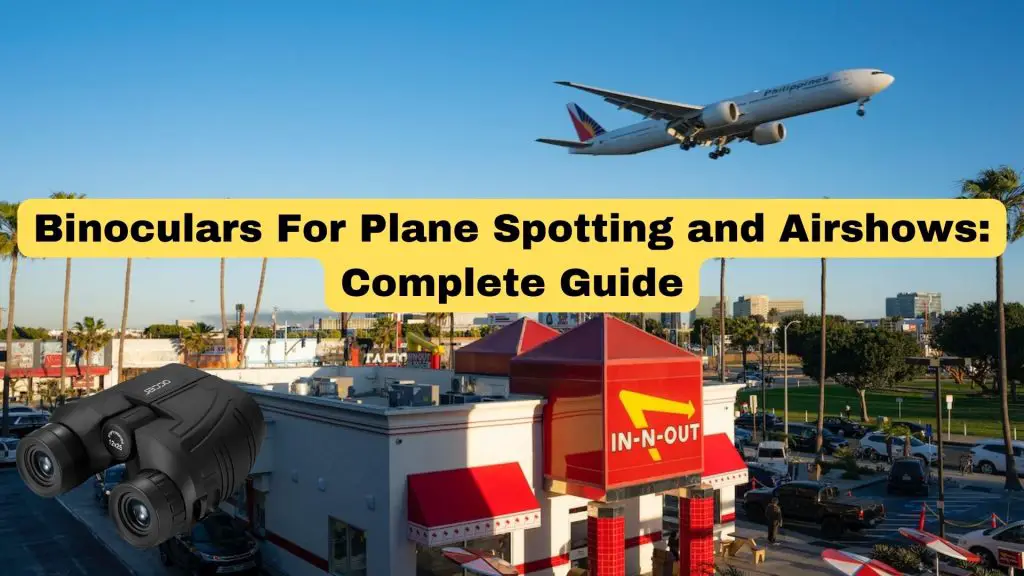
If you frequently observe airplanes flying in your vicinity or derive pleasure from attending airshows, having a pair of binoculars is highly recommended.
A quality set of binoculars enables you to closely examine aircraft with enhanced detail.
This guide provides insights into the most suitable binoculars for plane spotting, along with the essential features to consider when making a purchase.
Additionally, we have compiled a list of our top recommended binoculars specifically for plane spotting.(General Plane Spotting & Airshows, High Altitude Plane Spotting
Basic Components of Binoculars & Important Numbers
Binoculars consist of several key components that work together to provide a magnified and clear view of distant objects.
Understanding these components and numbers on binoculars will help you evaluate and compare different models.
Objective Lens:
The objective lens is located at the front of the binoculars and collects light to form the primary image.
The size of the objective lens, measured in millimeters (e.g., 42mm), determines how much light the binoculars can gather.
Larger objective lenses allow more light, resulting in brighter images.
Magnification:
Magnification refers to the level of enlargement provided by the binoculars.
It is typically denoted by a number followed by an “x” (e.g., 8x, 10x). For example, with 8x magnification, objects appear eight times closer than they would to the naked eye.
Higher magnification provides a more detailed view but may also result in a narrower field of view and reduced stability.
Eyepiece:
The eyepiece is where you position your eyes to view the magnified image. It contains the ocular lens, which helps focus the image for your eyes.
Specific Features for Planespotting
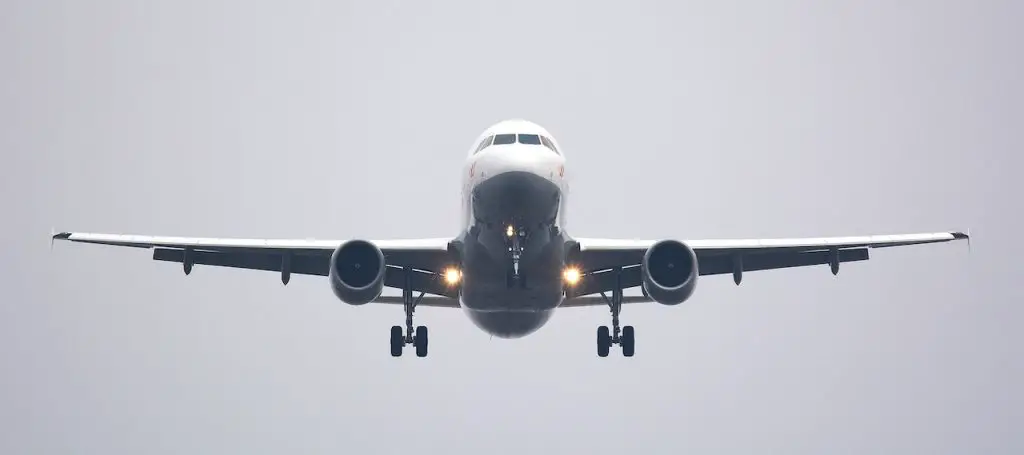
When choosing binoculars for planespotting and air shows, certain features become particularly important to enhance the overall experience and ensure optimal performance.
Field of View:
The field of view is the width of the observable area seen through the binoculars.
A wider field of view allows you to capture more of the scene, making it easier to track fast-moving aircraft.
Generally speaking, the field of view for plane spotting at high altitudes should not be a major cause for concern.
However, if you have the option to choose between two devices with similar characteristics, it is advisable to opt for the one with a wider field of view.
A broader view undoubtedly facilitates the task of locating and tracking aeroplanes, particularly when employing a tripod.
Also, A broader field of view allows you to easily locate and follow aircraft, especially during air shows with multiple planes in action.
Exit Pupil:
The exit pupil is the small circle of light you see when you hold the binoculars at arm’s length.
It’s determined by dividing the objective lens diameter by the magnification (e.g., 42mm objective lens / 8x magnification = 5.25mm exit pupil).
A larger exit pupil is preferable, especially in low-light conditions, as it ensures a brighter image.
Focus Mechanism:
A smooth and precise focus mechanism is crucial for quickly adjusting focus on aircraft at various distances.
Look for binoculars with a user-friendly focus wheel that allows you to easily and accurately bring subjects into sharp focus.
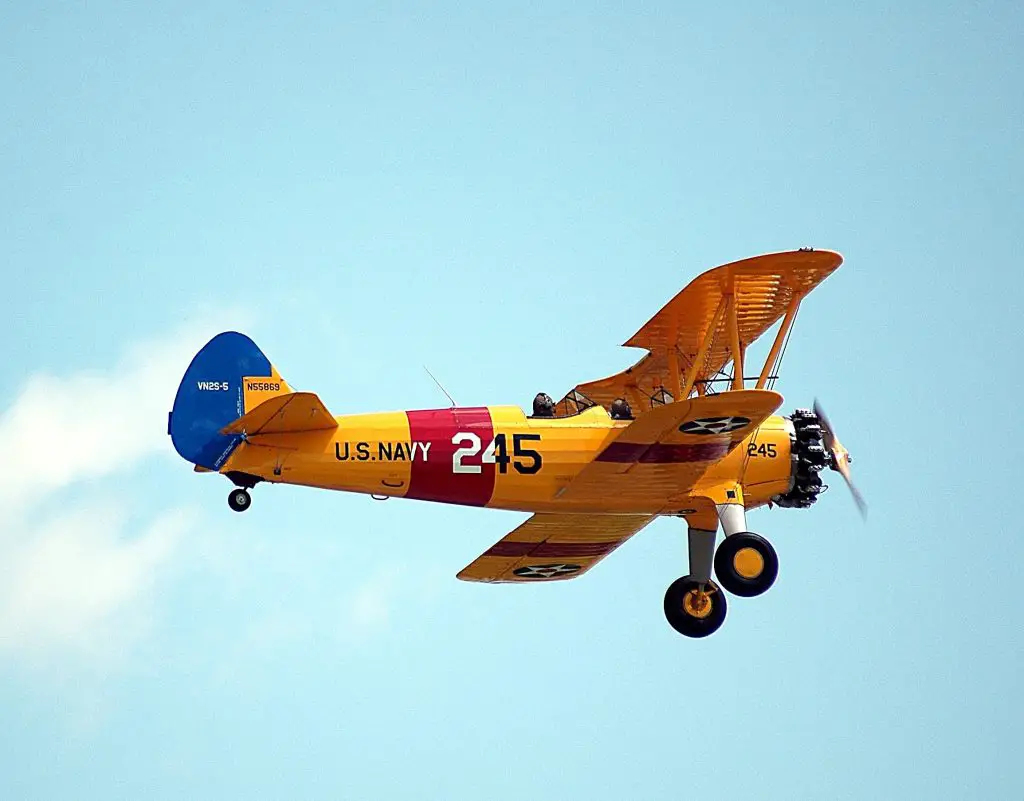
Magnification and Objective Lens Diameter
The Relationship between Magnification and Objective Lens Diameter:
The magnification and objective lens diameter of binoculars are closely related.
The magnification determines how much the image is enlarged, while the objective lens diameter influences the amount of light the binoculars can gather.
Advantages and Disadvantages of Different Objective Lens Diameters:
Objective lens diameters usually range from 30mm to 50mm or more.
Larger objective lenses allow more light to enter, resulting in brighter images, especially in low-light conditions.
However, they can make the binoculars heavier and bulkier.
Smaller objective lenses (25 to 30mm) offer portability advantages but may sacrifice some brightness.
Smaller objective lenses binoculars tend to produce dark images with limited details and have a narrow field of view, making it difficult to spot planes in motion.
If you plan to spot planes during the daytime or attend airshows, 32mm binoculars are suitable, and 42mm binoculars are even better.
Specifically, binoculars with 8x magnification and 32mm lenses or 10x magnification and 42mm lenses are ideal for the task. They offer sufficient magnification and brightness in low-light conditions.
On the other hand, if you frequently spot high-flying planes, binoculars with 42mm to 50mm lenses work best.
Optimal Magnification Range for Planespotting
For planespotting, it is recommended to choose binoculars with a moderate magnification range, typically between 8x and 16x.
Higher magnification may result in a narrower field of view and reduced stability, making it harder to track fast-moving aircraft.
For most viewers, obtaining a steady view is easily achievable with binoculars featuring 10x magnification.
However, individuals with a steady hand can comfortably use binoculars with up to 16x magnification. When it comes to airshows or observing low-flying planes, we recommend opting for 10x magnification as it provides an ideal balance.
Even for spotting high-flying planes, 10x magnification can be utilized effectively.
However, if your primary focus is on high-altitude planes, you will benefit more from using binoculars with 16x magnification.
It is important to note that we do not advise going for magnifications higher than 16x when it comes to plane spotting, unless you intend to consistently use a tripod.
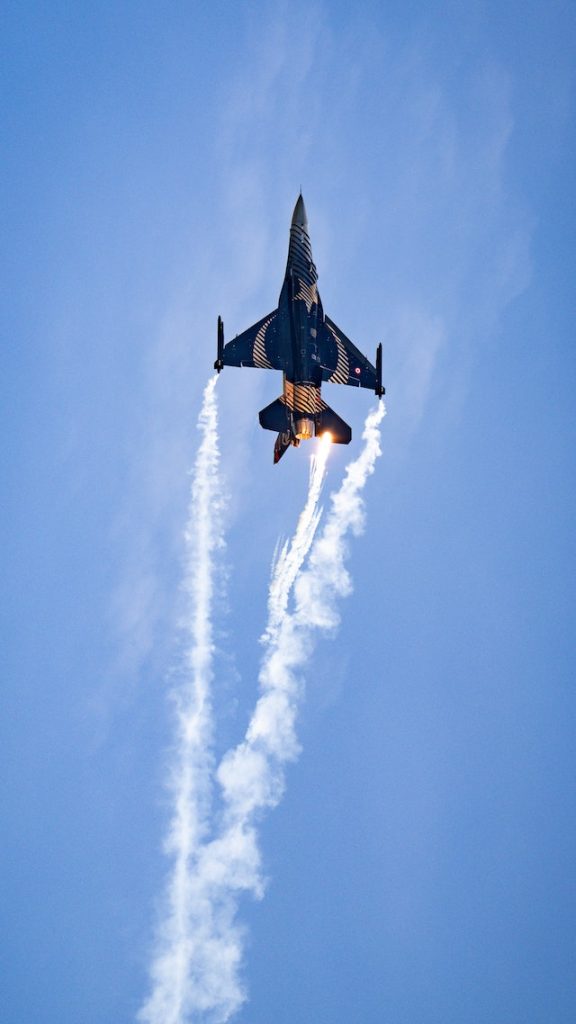
Optimal Binoculars Magnification and objective Lens size for Airshows
Plane spotting can be done from your backyard and you have the flexibility to use a tripod so you can even choose some bulky higher magnification binoculars like 16X magnification and 50mm objective lens
However, When attending an airshow or wandering around, portability becomes a crucial factor to consider while selecting binoculars.
Most people may find using a tripod less practical, so it’s important to choose a magnification level that allows for handheld use without excessive image shake.
In my opinion, the ideal binoculars for an airshow would be lightweight and compact, offering a reasonably wide field of view.
The magnification should be sufficient to bring you closer to the action without causing a significant image shake unless you opt for image stabilization binoculars.
Based on these considerations, the ideal airshow binoculars, in my opinion, would have objective lenses ranging between 22mm and 42mm.
They should offer a wide field of view, ideally exceeding 270 feet at a distance of 1000 yards. The magnification should fall within the range of 8x to 12x as anything above that can be difficult to handle while moving around
Trade-offs between Magnification and Field of View:
It’s important to strike a balance between magnification and field of view.
Higher magnification often results in a narrower field of view, while lower magnification can provide a wider view.
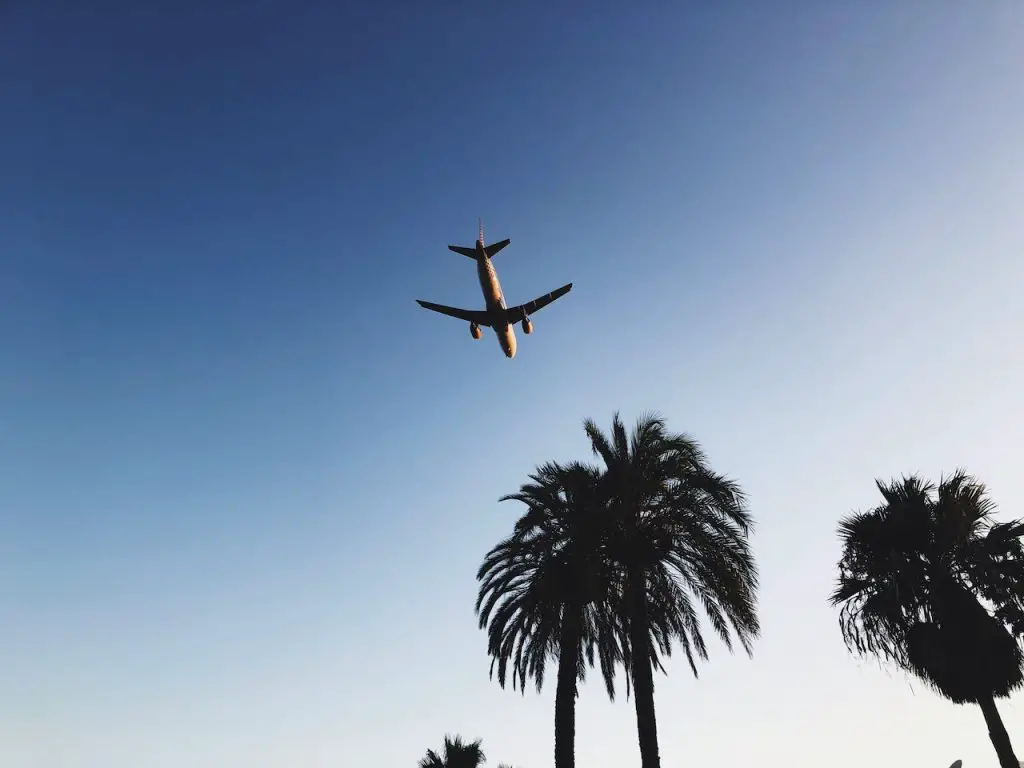
Optical Quality
Significance of Optical Quality:
Optical quality plays a crucial role in delivering a clear, sharp, and detailed image. High-quality lenses and coatings minimize aberrations, enhance light transmission, and provide superior color reproduction.
Factors Contributing to Optical Quality:
Look for binoculars with premium lens coatings such as anti-reflective coatings and phase correction coatings. These coatings improve contrast, reduce glare, and enhance overall image quality.
A high-quality glass, such as ED (extra-low dispersion) or HD (high-definition) glass, can also significantly enhance optical performance.
Impact of Budget on Optical Quality Choices:
Optics with better quality tend to come at a higher price.
While it’s advisable to invest in good optical quality, you can still find binoculars with decent optical performance within different price ranges. Consider your budget and prioritize optical quality based on your requirements.
Ergonomics and Size
Importance of Comfortable Handling:
Planespotting and air shows often involve long hours of observation.
Therefore, ergonomics play a vital role in ensuring comfortable handling. Look for binoculars with a design that fits well in your hands and offers a secure grip.
Weight and Size Considerations for Portability:
Consider the weight and size of the binoculars, especially if you plan to carry them for extended periods. Lighter and more compact models are easier to transport and
Budget Considerations
When it comes to choosing binoculars for planespotting and air shows, budget is an important factor to consider.
Binocular prices can vary greatly depending on the brand, quality, and features.
Understanding the range of prices, and associated features, and finding the right balance between budget and quality is crucial for making an informed decision.
Range of Prices for Binoculars and Associated Features
Binoculars are available at various price points to accommodate different budgets.
The price range can start from as low as $50 and go up to several thousand dollars for high-end models.
As the price increases, so does the quality of optics, building materials, and additional features.
However, it’s essential to note that a higher price doesn’t always guarantee the best performance for your specific needs.
Lower-priced binoculars often provide basic functionality, reasonable image quality, and durability suitable for casual planespotting.
Mid-range binoculars offer improved optical performance, enhanced durability, and features like better coatings and ergonomic designs.
High-end binoculars provide exceptional image quality, advanced optical technologies, robust construction, and additional features such as image stabilization.
Image Stabilization Binoculars For Plane Spotting
Image-stabilized binoculars use gyroscopes or accelerometers to detect hand movements. Microprocessors analyze this data and activate optical mechanisms.
These mechanisms adjust the path of light entering the binoculars in real time to counteract the motion.
The result is a steadier image, reducing the effects of hand tremors and vibrations for improved visibility during plane spotting.
These binoculars are available with various magnifications, such as 12x, 15x, 18x, and even 20x, and they can effectively counteract hand movements.
However, it is worth noting that there are a couple of downsides to consider.
First, these binoculars tend to be more expensive due to the advanced technology involved.
Additionally, since they rely on a microcomputer, they require batteries, which adds to the weight of the product.
If you are interested in investing in image-stabilized binoculars, Canon is widely regarded as a top manufacturer in this category.
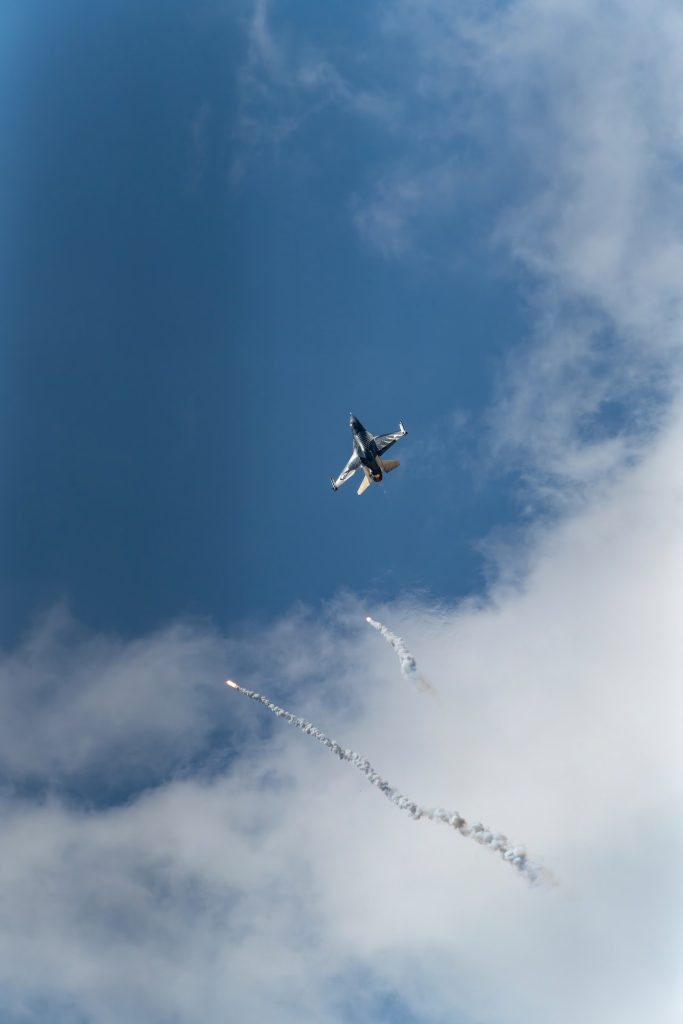
Best Binoculars For Normal Plane Spotting and Airshows at Different Price Points
Entry-Level Budget (Under $200):
Celestron Nature DX 8×42:
A great entry-level binocular with good image quality, durable construction, and a wide field of view. If your budget is below $100 you can get these awesome pairs confidently for plane spotting.
- MULTI-COATED OPTICS AND BaK-4 PRISMS: Multi-coated optics help obtain high resolution and high contrast views, while the...
- WATERPROOF AND FOGPROOF: Designed to withstand all weather conditions, our Outland X compact binoculars have been filled...
- PROTECTIVE RUBBER COVERING: Our binocular is both durable and well-armored; its rugged exterior ensures protection from...
Nikon Aculon A211 10×42:
Provides a nice magnification and light-gathering ability suitable for longer-distance observations.
- ACULON A211 10x42 binoculars are designed to be as light as possible along with excellent ergonomics.
- Turn and Slide Rubber Eyecups allow for comfortable viewing during extended periods of use.
- Made with A spherical Multicoated Eco Glass Lenses bright and clear images in most lighting conditions.
Mid-Range ($200-$500):
Vortex Diamondback 10×42:
Offers excellent optical quality, durable construction, and a comfortable grip for extended use.
- 10x magnification & 42mm objective lenses, these Diamondback HD binos are optimized with select glass elements to...
- Fully multi-coated lenses increase light transmission with anti-reflective coatings on all air-to-glass surfaces....
- Adjustable eyecups twist up and down for comfortable viewing with or without eyeglasses. Center focus wheel adjusts the...
Bushnell Legend L-Series 10×42:
Known for its exceptional image quality, weather resistance, and user-friendly features.
- 10 x 42Millimeter. Length-5.5 inch
- Legend L Series
- 340ft field of view
High-End ($500 and above):
Swarovski EL 10×42:
Renowned for its premium optics, exceptional image clarity, and rugged design, often considered top-of-the-line for planespotting enthusiasts.
- This purchase Includes: Swarovski Optik EL 10x42 Binocular, Field Bag, Eyepiece Cover, Objective Lens Cover, Lift...
- Magnification: 10x
- Submersion tightness up to 13 ft(4m) deep
Leica Ultravid HD-Plus 10×42:
Delivers outstanding optical performance, durable construction, and excellent low-light capabilities.
- The prisms of the new binoculars are made from specially formulated SCHOTT glasses with exceptional transmission...
- The Leica Ultra vid HD-Plus 42 binoculars therefore also offer increased contrast performance in all viewing situations,...
- The Leica Ultra vid HD-Plus 42 models are available with 7×, 8× and 10× magnification and are identified by an...
These examples demonstrate the varying features and performance available at different price points.
Best Binoculars For High Altitude Plane Spotting
1.Nikon 8250 ACULON A211 16×50 Binocular
As high-altitude plane spotting would require high-magnification binoculars, we recommend 16x binoculars with a 50mm objective lens diameter. We recommend our first pick Nikon 16×50 Aculon Binoculars
These Nikon binoculars offer high-power binoculars that are well-suited for high-altitude plane spotting as well as long-distance or general viewing. Moreover, The binoculars are crafted using environmentally friendly Eco-Glass, demonstrating Nikon’s commitment to sustainability. They provide a wide field of view, allowing you to capture a broad perspective, and deliver bright, high-contrast detailed images of aircraft for optimal clarity.
- ACULON A211 16x50 binoculars are designed to be as light as possible along with excellent ergonomics.
- Turn-and-Slide Rubber Eyecups allow for comfortable viewing during extended periods of use.
- Made with A spherical Multicoated Eco-Glass Lenses bright and clear images in most lighting conditions.
2. Nikon 7247 Action 16×50 EX Extreme
Our 2nd pick for best high-altitude plane spotting would be from the same Nikon brand.
The Nikon EX Extreme 16×50 binoculars offer powerful 16x magnification for long-distance viewing. They are waterproof, ensuring protection against moisture, dust, and debris. The barrels are fog proof, filled with nitrogen gas to prevent internal fogging. These binoculars feature Porro prisms, providing a wider field of view and richer depth of field compared to roof prisms. The lenses are multi-coated with anti-reflective coatings, increasing light transmission. With BaK-4 prisms made of superior optical glass, the binoculars deliver clearer images. The adjustable eyecups can be twisted up or down for comfortable viewing, with or without eyeglasses. Additionally, the binoculars are tripod adaptable, allowing for easy mounting with standard ¼-inch threading.
- Bright, multicoated optics
- Long eye relief for eyeglass wearers
- Rugged waterproof, fog proof construction
High Altitude Plane Spotting- An Interesting Video
Interesting Read: Are Binoculars Allowed In Planes?
Additional Accessories and Tips
To enhance your planespotting experience and get the most out of your binoculars, there are optional accessories to consider, along with essential maintenance and usage tips.
By utilizing these accessories and following proper care practices, you can ensure optimal performance and enjoy seamless observation at air shows or planespotting locations.
Optional Accessories for Enhanced Planespotting Experience
Tripod Adapters:
Binoculars with higher magnification can benefit from tripod adapters.
These adapters allow you to mount your binoculars on a tripod, providing stability and reducing handshake for extended observation periods.
Smartphone Adapters:
Smartphone adapters enable you to attach your smartphone to the binoculars, transforming them into a telephoto lens for capturing photos and videos.
This accessory is especially useful for documenting planespotting experiences or sharing sightings with others.
Binocular Harness or Strap:
A binocular harness or strap helps distribute the weight of the binoculars evenly across your shoulders, providing comfort during extended use. I
t keeps the binoculars readily accessible and prevents accidental drops.
Lens Filters:
Filters can be useful in specific lighting conditions. For instance, neutral density filters can help reduce glare from bright skies, while polarizing filters can enhance contrast and reduce reflections.
Identifying Aircraft Components while Plane Spotting-An Interesting Video
Advice on Using Binoculars Effectively at Air Shows or Planespotting Locations
Plan Ahead:
Familiarize yourself with the air show schedule or planespotting location. Research the best vantage points and plan your position accordingly.
Adjust the Binoculars:
Set the diopter adjustment according to your eyesight before focusing. This ensures a clear and sharp image without straining your eyes.
Use Both Eyes:
Keep both eyes open when using binoculars. This helps maintain situational awareness and reduces eye fatigue during prolonged observations.
Follow Aircraft Movement:
Anticipate the flight paths of aircraft and adjust the binoculars’ field of view to track them effectively. Practice panning smoothly to keep the aircraft in sight.
Stay Aware of Surroundings:
While focusing on the aircraft, remain aware of your surroundings to ensure safety and avoid collisions with others or obstacles.
Respect Privacy and Regulations:
Adhere to any rules or regulations set by the air show organizers or planespotting locations. Respect the privacy of others and avoid obstructing their view.








